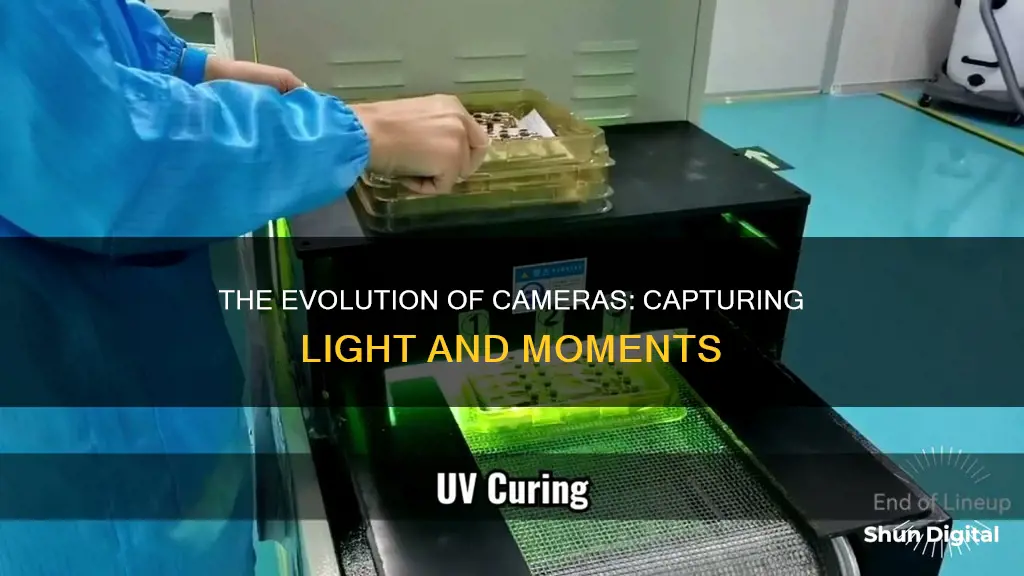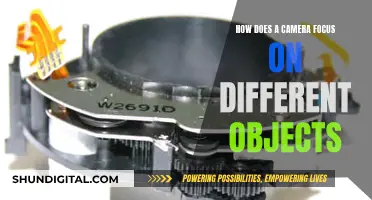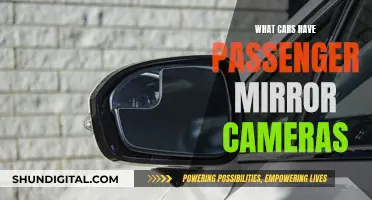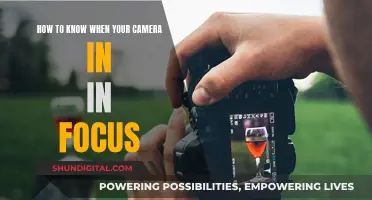
The history of the camera is a long and fascinating one, spanning centuries and involving numerous inventors and innovations. The evolution of the camera can be traced back to the camera obscura, a natural optical phenomenon where an inverted image is projected through a small aperture onto a surface. The concept of the camera obscura was first described by Han Chinese philosopher Mozi around 470 to 391 BC, and it was later studied by Arab scholar Ibn Al-Haytham (Alhazen) in the 10th century.
The first camera to take a permanent photograph was invented by French inventor Nicephore Niepce in 1816. Niepce used paper coated with silver chloride, which produced a negative image. However, these images were not permanent due to the nature of silver chloride. Niepce later experimented with Bitumen of Judea, a semi-solid form of oil, mixed with pewter, to create permanent photographs.
Over the years, various inventors contributed to the development of the camera, including Louis Daguerre, who created the daguerreotype process in 1839, and Henry Fox Talbot, who invented the calotype process in the 1830s. The introduction of photographic film in the late 19th century by George Eastman revolutionized photography, making it more accessible to the general public. The first digital camera was invented in 1975 by Steven Sasson, an engineer at Eastman Kodak.
Today, cameras are an integral part of our daily lives, with most people carrying a camera on their smartphone, and the technology continues to evolve and advance.
| Characteristics | Values |
|---|---|
| First camera | Camera obscura, meaning “dark room” in Latin |
| First camera inventor | Han Chinese philosopher Mozi (c. 470 to c. 391 BC) |
| First camera prototype | Invented in 1816 by Joseph Nicephore Niepce |
| First photograph | Taken in 1826 or 1827 by Joseph Nicephore Niepce |
| First photographic camera | Invented in 1839 by Louis Daguerre |
| First mass-market camera | Daguerreotype camera produced by Alphonse Giroux in 1839 |
| First roll film camera | "The Kodak", created by George Eastman in 1888 |
| First 35mm camera | Leica, designed by Oskar Barnack in 1913 |
| First digital camera | Created by Steven Sasson in 1975 |
| First camera phone | Kyocera Visual Phone VP-210, released in 1999 |

The first camera
The history of the camera began long before the invention of photography, with the camera obscura—a natural optical phenomenon where an inverted image is projected through a small aperture onto a surface inside a dark room. The earliest records of this idea are attributed to Han Chinese scholar Mozi (c. 470–391 BC), and it was later observed and described by Aristotle, who noted how sunlight travelling through the spaces between leaves projects an image of the sun on the ground.
The camera obscura was used for centuries, aiding in drawing and painting, and for entertainment. However, the images it produced were not permanent. It wasn't until 1816 that the first photograph was created by Joseph Nicéphore Niépce, who used a camera obscura to capture an image on a light-sensitive material called Bitumen of Judea, also known as Asphalt of Syria. This process, which Niépce called heliography, or "sun drawing", took several days and produced a blurry image.
In 1829, Niépce partnered with Louis Daguerre, and after Niépce's death in 1833, Daguerre continued to experiment and improve the heliographic process. In 1837, he created the first practical photographic process, which he named the daguerreotype. This process used a silver-plated copper sheet treated with substances to make its surface sensitive to light. The plate was then exposed to light in a black box for a short period, fumed with mercury vapour, and chemically treated to become insensitive to light. The image was then rinsed, dried, and sealed in a protective glass enclosure.
The daguerreotype produced a much better image quality than Niépce's heliography, required less exposure time, and was portable. However, it was still not widely accessible due to the cost of the camera and materials. In 1839, Alphonse Giroux produced the first camera to use standardised plates that could be purchased separately, with an exposure time of 5 to 30 minutes and a cost of around $7,000 in today's money. This camera is considered by many to be the first true photographic camera.
Momentum Camera: Battery Power Options Explored
You may want to see also

The camera obscura
The first use of the term "camera obscura" is found in a 1604 book by German mathematician, astronomer, and astrologer Johannes Kepler. He discovered the working of the camera obscura by recreating the principle with a book and threads.
Charging the Eufy Solar Camera: A Quick Guide
You may want to see also

The daguerreotype
The process required great care. First, the silver-plated copper plate had to be cleaned and polished until the surface looked like a mirror. Then, the plate was sensitised in a closed box over iodine until it took on a yellow-rose appearance. The plate, held in a lightproof holder, was then transferred to the camera. After exposure to light, the plate was developed over hot mercury until an image appeared. To fix the image, the plate was immersed in a solution of sodium thiosulfate or salt and then toned with gold chloride.
Understanding Camera Raw: A Powerful Plugin for Photographers
You may want to see also

The calotype
Talbot's process involved exposing a sheet of paper coated with silver iodide in a camera obscura. The light caused the silver iodide to darken in tone, yielding a negative image. This was a major innovation because the negative image could be used to create multiple positive prints through simple contact printing.
Talbot's discovery of gallic acid, which could be used to "develop" the image, was another important aspect of the calotype. This chemical accelerated the silver iodide's reaction to light, allowing for much shorter exposure times—from one hour down to one or two minutes.
The Ultimate Guide to Installing Camera Mods
You may want to see also

The digital camera
The history of the camera began long before the introduction of photography. The first camera to take a permanent photograph was invented around 1816 by French inventor Nicephore Niepce. However, the first mass-marketed camera was a daguerreotype camera produced by Alphonse Giroux in 1839. It cost 400 francs (approximately $7,000 by today's standards) and had an exposure time of 5 to 30 minutes.
The first camera to use digital electronics to capture and store images was developed by Kodak engineer Steven Sasson in 1975. He used a charge-coupled device (CCD) to create a digital camera that saved black-and-white images onto a cassette tape. The images were then read from the cassette and viewed on a TV monitor. Later, cassette tapes were replaced by flash memory.
The first commercially available handheld camera to use digital photography was the 1990 Dycam Model 1. Created by Logitech, it used a CCD to record data onto internal memory. The camera could then be connected to a personal computer, and the image could be downloaded for viewing or printing.
Digital SLRs (DSLRs) soon followed, with Nikon and Canon cornering the market with their high-quality devices that included digital viewfinders to look at previously taken pictures.
The first camera phone was the Kyocera VP-210, developed in 1999. It included a 110,000-pixel camera and a 2-inch colour screen to view photos.
How Night Mode Captures the Dark
You may want to see also
Frequently asked questions
Camera obscura, meaning "dark room" in Latin, was the first camera ever created. It was a small, gloomy room with light entering only through a small hole, casting an inverted image of the outside scene onto the adjacent wall.
The first camera was invented in 1816 by Frenchman Joseph Nicéphore Niépce.
Niépce created photographic images on silver chloride-lined paper. The images were negative images with reversed colours.
The first photograph ever taken was captured in 1826 or 1827 by Niépce, using a camera obscura. It took at least eight hours of exposure to produce.
Over time, cameras evolved from large, room-sized contraptions requiring multiple people to operate, to portable devices, and now to digital cameras and camera phones.







